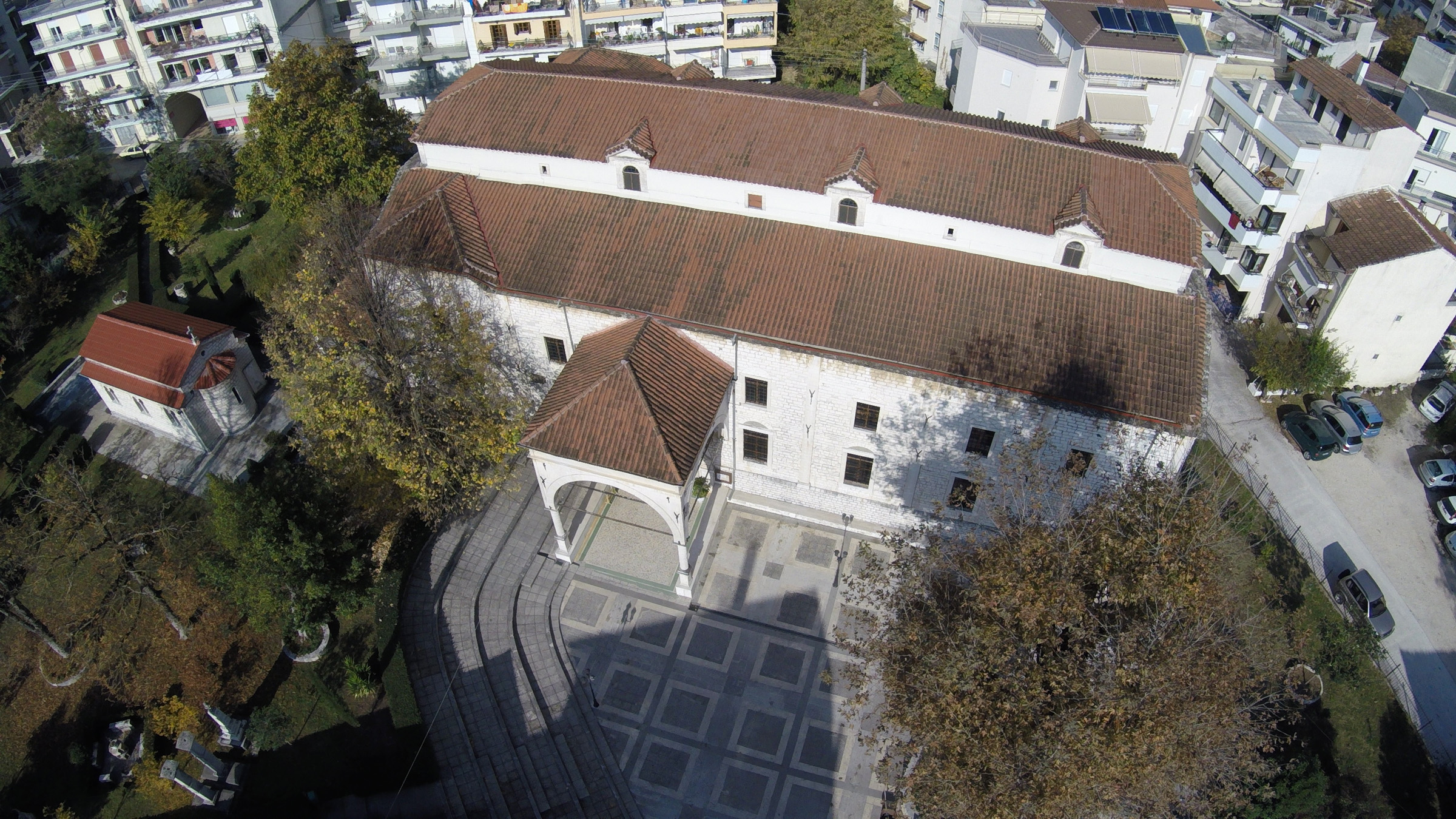The monastery is on the east coast of the island, just next to the Monastery of St John the Baptist. As delivered from the autobiography of Apsaras, at the same position there was a hermitage dedicated to Saint Panteleimon from the early 16th century when the Baptist monastery was founded. The monastery is a three-aisled basilica with a flat wooden roof and consists of the nave, the sanctuary and the zenana. The church suffered considerable damage due to the landslide of rocks and was repaired in 1800 and 1815 by order of Ali Pasha.
The area was directly connected with Ali, who fled to the monastery in the last period of his siege by the sultan’s troops and was eventually murdered in the cells of the monastery in January 1822. After his death the soldiers of the Sultan looted and burnt the monastery which was rebuilt to the actual form and was classified as an historical monument in 1925. Within the precincts of the monastery, apart from the church, two, newly restored cell-buildings are retained. The northern cell that functioned as abbey, houses the collection of incunabula and manuscripts of the monasteries of the island. The southern cell, with the passageway that connects the monastery to the neighbouring monastery of the Baptist, is the place where Ali Pasha was assassinated and now houses a museum of the revolutionary period. According to K. Nikolaidis, the monastery of Saint Panteleimon remained in history not only as the last refuge of Ali Pasha but also for the fair which was “the first and best of the island”.



























